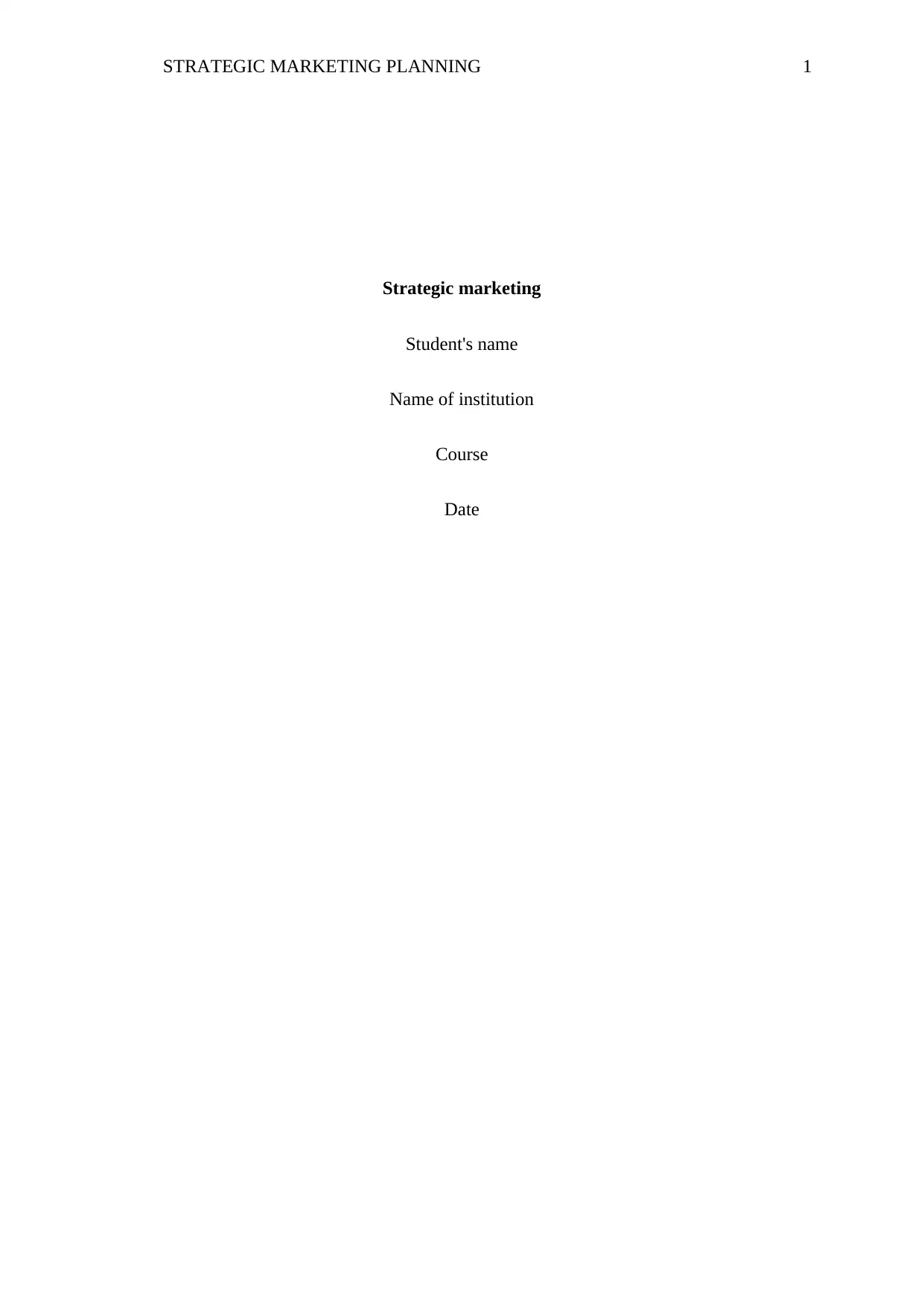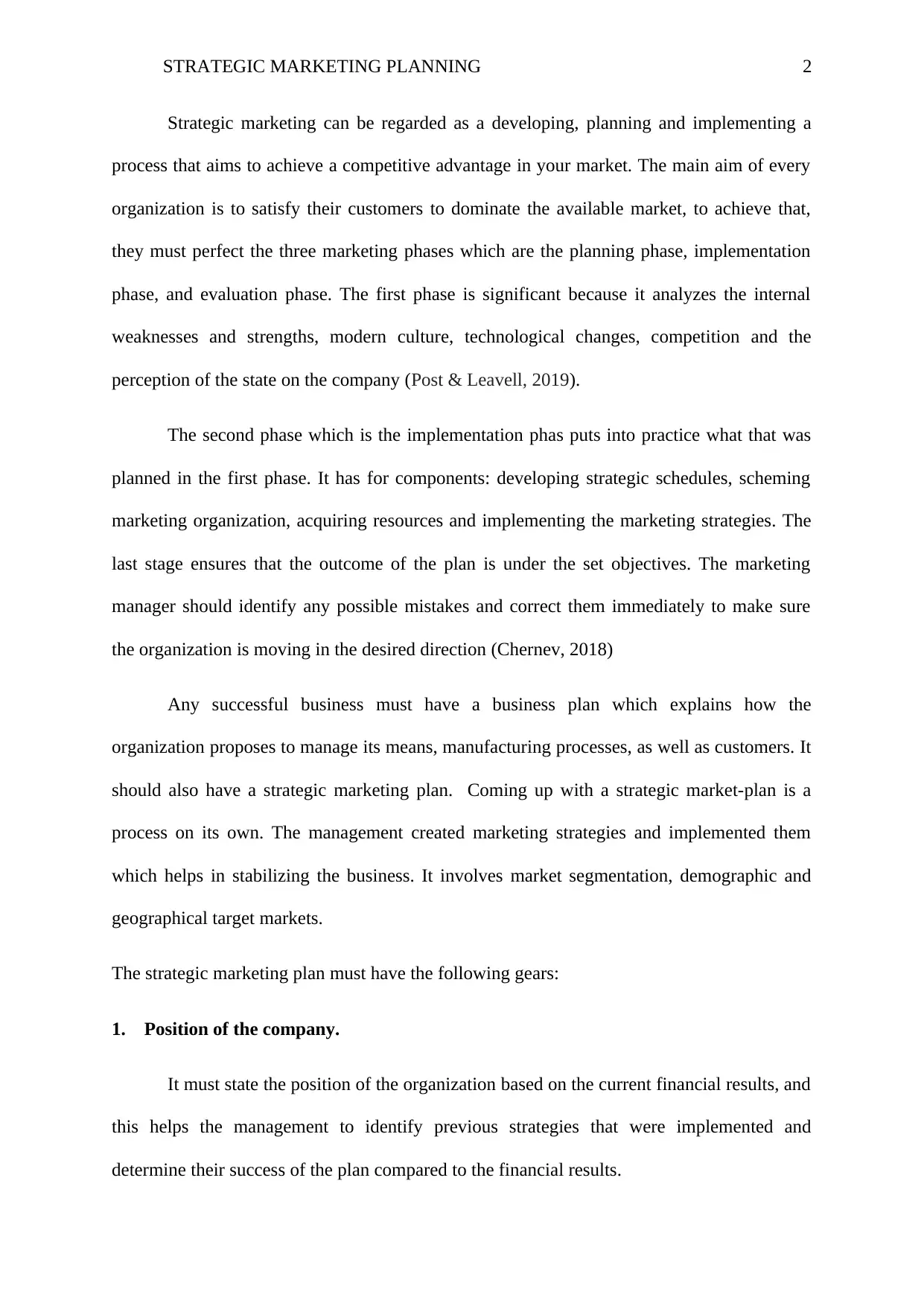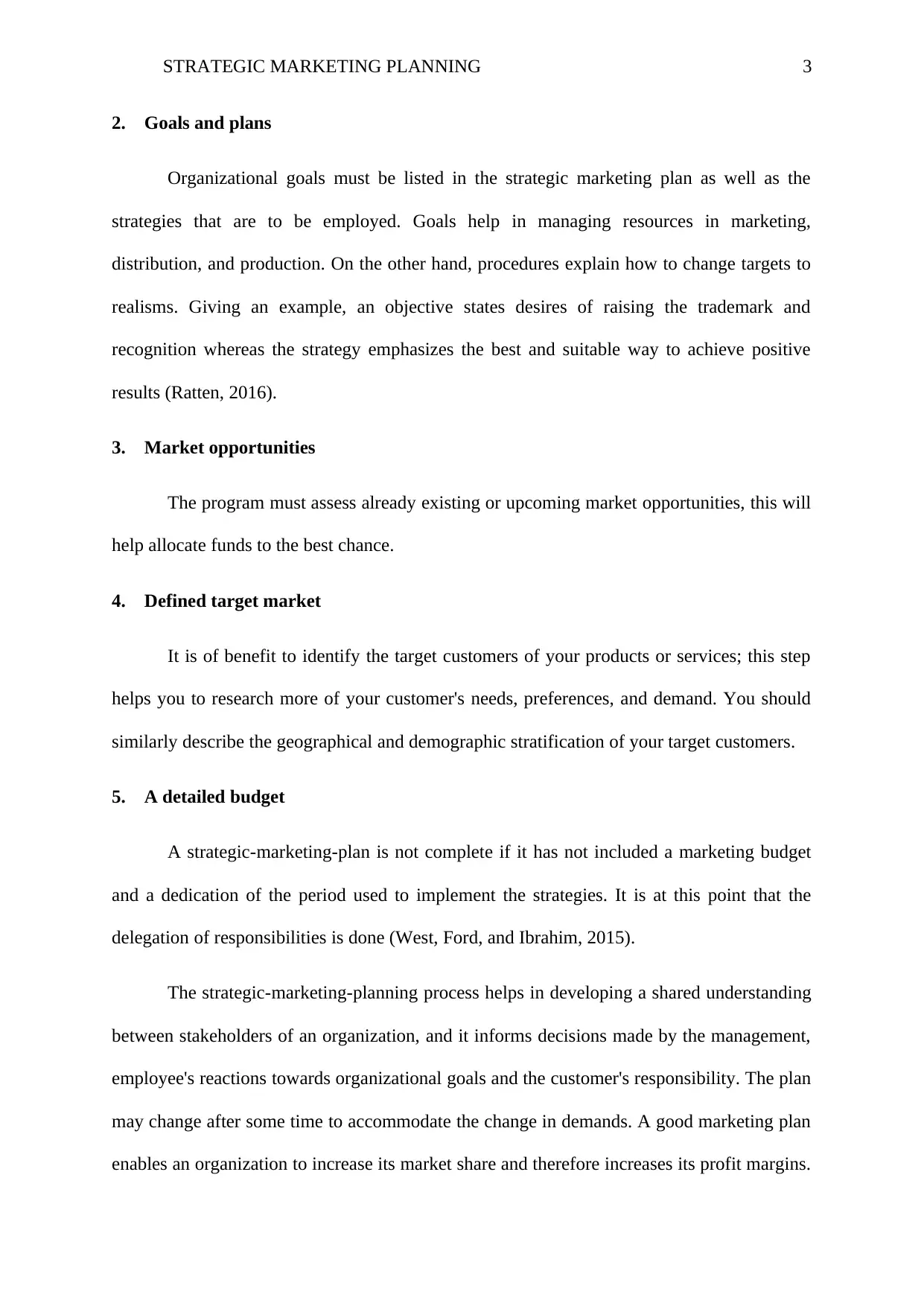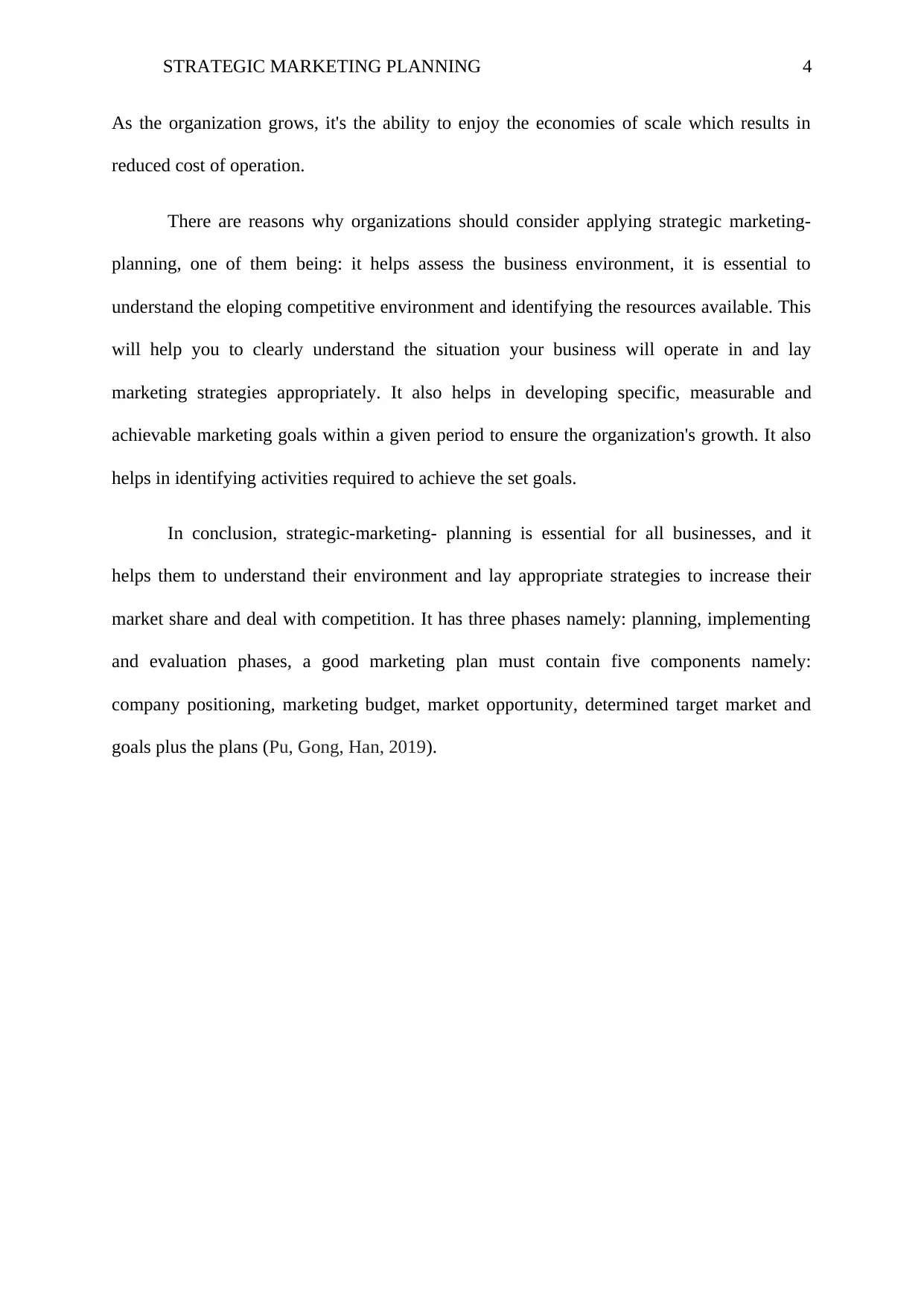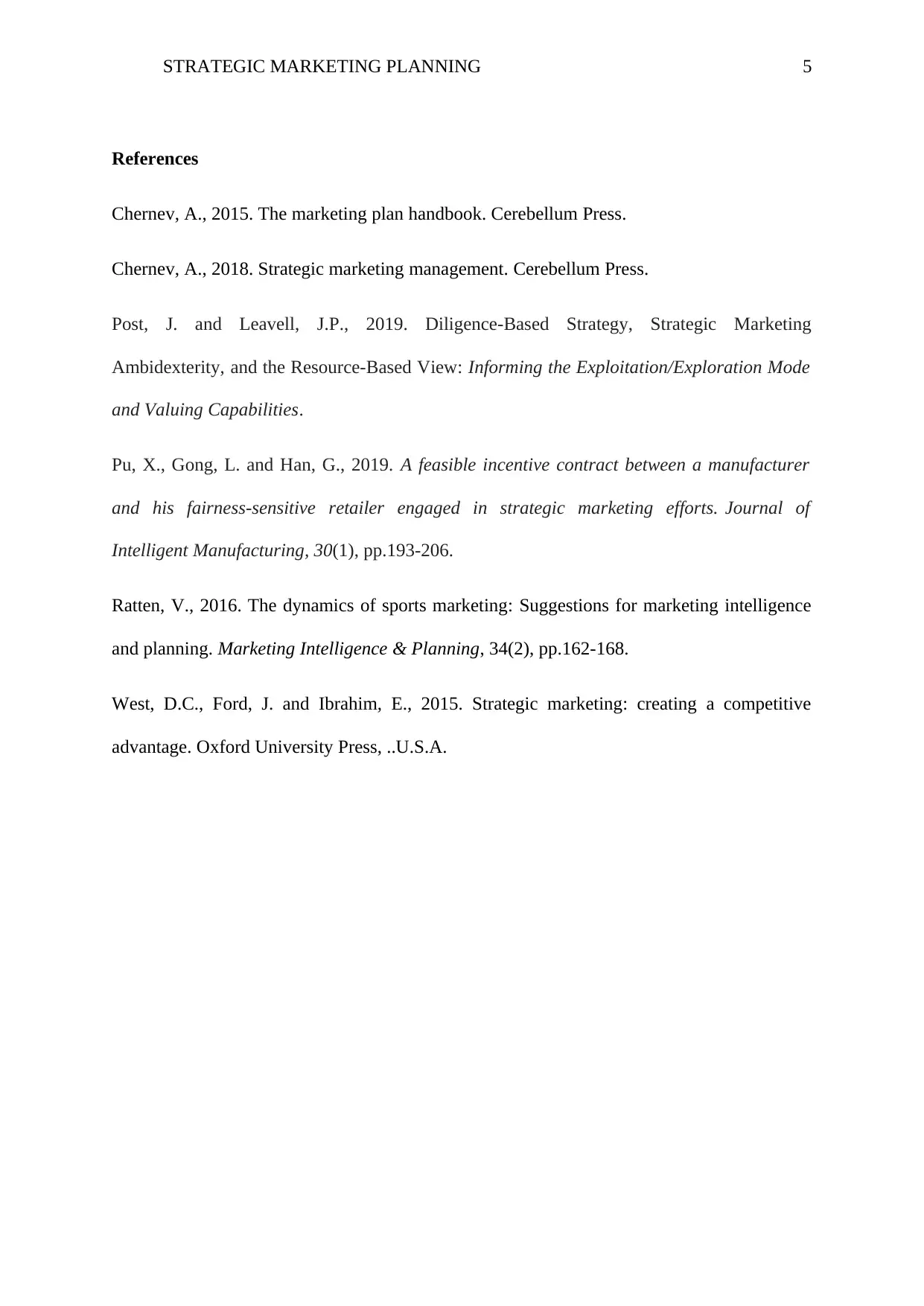Strategic Marketing Planning: Components, Process, and Benefits
VerifiedAdded on 2023/03/17
|5
|997
|78
Report
AI Summary
This report provides a comprehensive overview of strategic marketing planning. It defines strategic marketing as a process of developing, planning, and implementing strategies to achieve a competitive advantage. The report emphasizes the three key phases: planning, implementation, and evaluation, highlighting the importance of analyzing internal strengths and weaknesses, market trends, and competition. It details the components of a strategic marketing plan, including company positioning, organizational goals, market opportunities, a defined target market, and a detailed budget. The report explains how strategic marketing planning fosters a shared understanding among stakeholders, guides management decisions, and adapts to changing market demands. It also outlines the benefits of strategic marketing planning, such as assessing the business environment, setting measurable goals, and identifying activities to achieve those goals. In conclusion, the report underscores the essential role of strategic marketing planning for business success and increased market share.
1 out of 5
